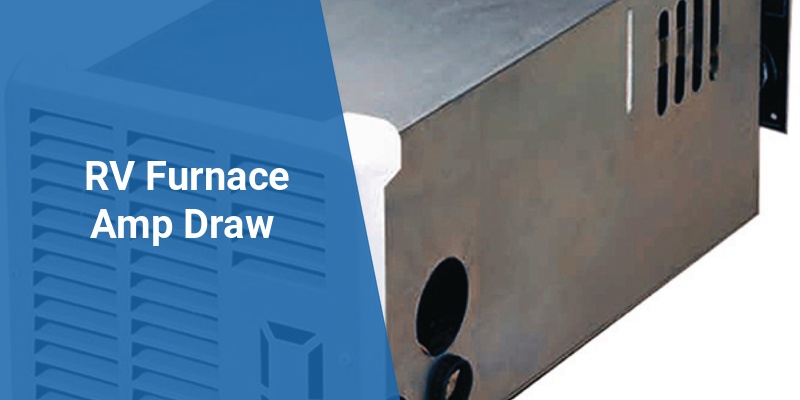Knowing the amp draw of an RV furnace is essential for managing power resources effectively. Whether running on battery power or shore power, understanding how much current your furnace consumes helps prevent battery drain and ensures comfortable heating in your RV. This article discusses the typical amp draw of RV furnaces, factors influencing power usage, and tips for efficient operation.
| RV Furnace Component | Typical Amp Draw (Amps) | Notes |
|---|---|---|
| Blower Fan | 3 – 6 | Runs intermittently, depending on thermostat setting |
| Igniter | 8 – 10 (peak) | Runs briefly during startup |
| Control Board & Sensors | 0.2 – 1 | Continuous low power draw |
How Much Power Does an RV Furnace Use?
An RV furnace’s power consumption varies depending on the model and the stage of operation. The primary electrical components drawing power include the igniter, blower fan, and control system. The igniter typically draws the highest current briefly during ignition, around 8 to 10 amps. The blower fan, essential for circulating warm air, usually runs between 3 to 6 amps but only when activated by the thermostat. The control board and sensors maintain a low continuous current, usually less than 1 amp.
Factors Influencing RV Furnace Amp Draw
Several factors influence the amp draw of an RV furnace. These include the furnace type, size, efficiency, and power supply method. Understanding these variables helps in estimating actual power needs more accurately.
Furnace Type and Size
Most RV furnaces are gas-powered with electrical components for ignition and blower operation. Larger furnaces designed for bigger RVs generally require higher blower motor amps to distribute heat effectively. Conversely, smaller furnaces tend to draw less current. For instance, 20,000 BTU furnaces use less electricity than 30,000 BTU units.
Operational Cycle
The furnace does not continuously draw full current. The igniter runs briefly only during start-up, while the blower runs intermittently dictated by the thermostat setting. During idle or when the furnace is off, amp draw is minimal due to control board power consumption only.
Power Source and Voltage
Most RV furnaces operate on 12-volt DC systems supplied by the RV battery or converter. However, some may operate on 120-volt AC if shore power is available. The amp draw will vary accordingly, with the electrical components designed to match the voltage type.
Measuring and Monitoring RV Furnace Amp Draw
To prevent battery depletion and ensure efficient furnace use, monitoring the amp draw is important. Here are common methods to measure the furnace’s current:
Call 888-906-9139 for Free Local HVAC Quotes – No Obligation, Just Savings!
- Clamp Meter: A non-intrusive tool that measures current flow on the 12-volt wire feeding the furnace blower or igniter circuit.
- Multimeter: Can measure current with proper setup but requires circuit interruption.
- Battery Monitor Systems: Track overall battery usage and can help estimate current drawn by the furnace during operation.
Tips for Managing Furnace Amp Draw Efficiently
Efficient operation of an RV furnace not only prolongs battery life but also improves safety and comfort. Here are key tips to optimize power use:
- Use the Furnace Only When Necessary: Limit operation to periods requiring heat to avoid unnecessary battery drain.
- Insulate Your RV: Good insulation reduces the furnace run time and energy usage dramatically.
- Choose a High-Efficiency Furnace: Newer models with improved blower motors and ignition systems draw less current.
- Use Supplemental Heating: Space heaters or propane heating can sometimes be more energy-efficient in mild conditions.
- Maintain Your Furnace: Regular cleaning and servicing ensure components operate at peak efficiency, reducing power draw.
Common RV Furnace Amp Draw Ranges by Brand
| Brand | Model | Typical Amp Draw (Blower) | Igniter Amp Draw |
|---|---|---|---|
| Dometic | DM285ST | 4.5 – 5.5 | 8 – 9 |
| Suburban | SF-30 Series | 3.5 – 6 | 8 – 10 |
| Atwood | MDV Series | 4 – 6 | 7 – 9 |
Understanding Amp Draw Impact on RV Battery Life
When running the furnace on a 12-volt battery, the amp draw directly affects how long the battery will last before needing a recharge. For example, if your furnace blower runs at 5 amps, a 100 amp-hour battery could theoretically power it for 20 hours (100 amp-hours / 5 amps). However, practical factors such as battery age and inverter efficiency reduce this time.
Igniter use is brief, so its higher amp draw only slightly impacts overall battery life. Most battery depletion occurs during prolonged blower operation. Monitoring amp draw can help RV owners plan power use and avoid unexpected battery failures.
